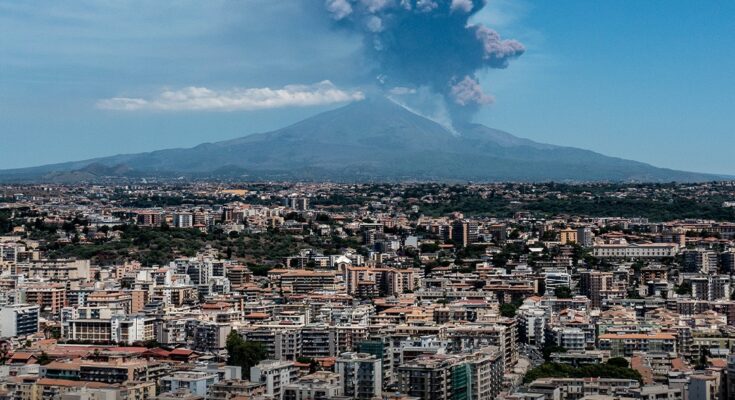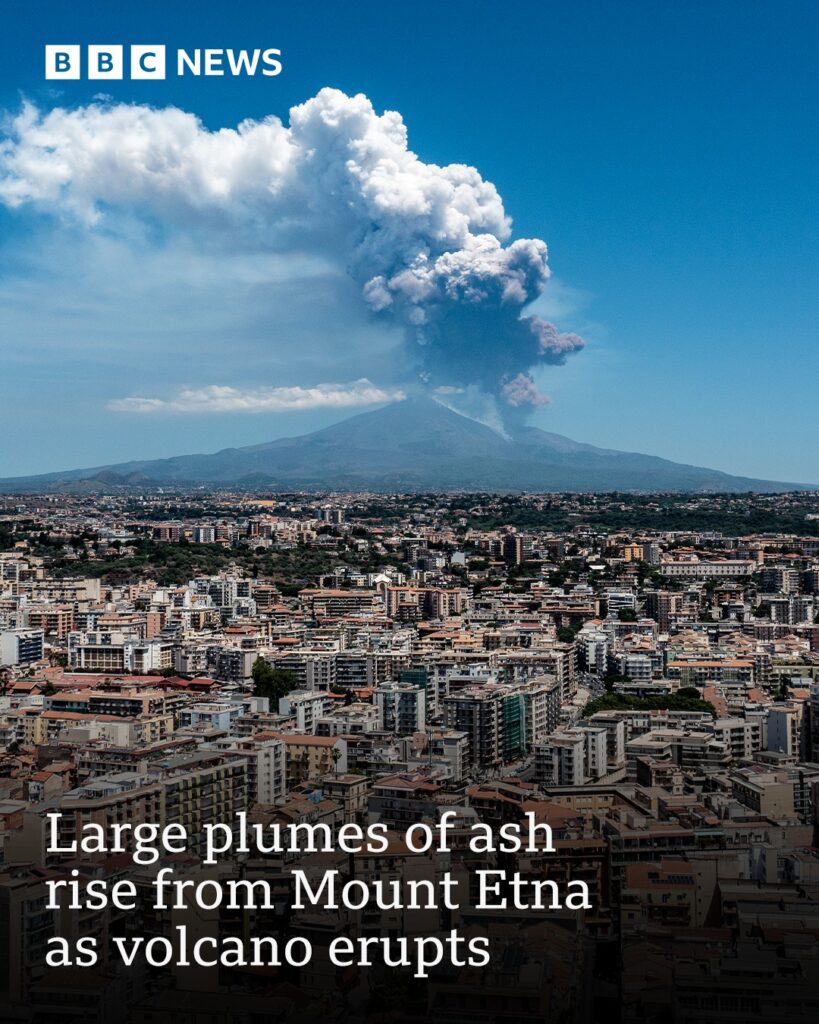
On Monday, one of the world’s most active and iconic volcanoes, Mount Etna, once again reminded the world of its immense power. Located on the east coast of Sicily, Italy, Mount Etna erupted in spectacular fashion, sending towering plumes of ash high into the sky and capturing the attention of scientists, locals, and travelers alike.
The eruption began early in the day, with initial signs including increased seismic activity and minor tremors near the volcano’s summit. By the afternoon, massive columns of ash and volcanic material were visible from miles away, rising several kilometers into the atmosphere. The dark clouds blanketed surrounding towns, temporarily disrupting air travel and covering parts of Sicily in a fine layer of ash.
A Natural Giant Awakens
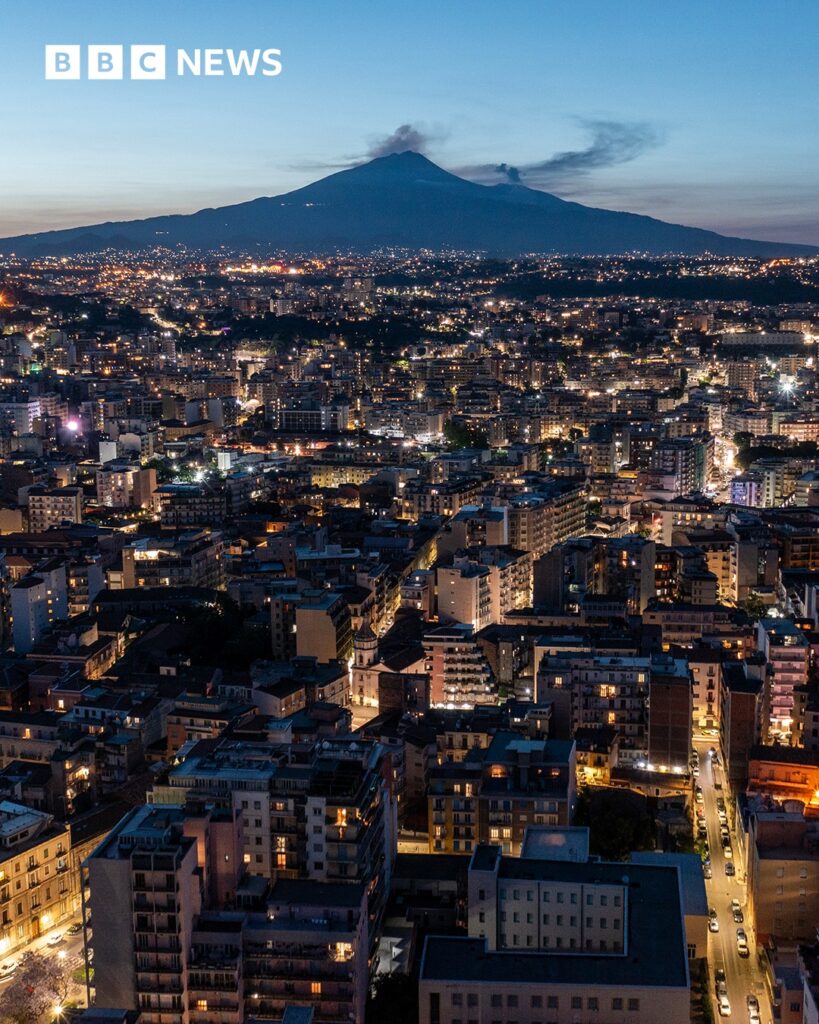
Standing at over 3,300 meters (10,900 feet), Mount Etna is Europe’s tallest and most active volcano. It has been erupting for hundreds of thousands of years and is in a near-constant state of activity. Monday’s eruption was dramatic but not entirely unexpected. Etna has had a history of frequent outbursts, with some more intense than others. Geologists and volcanologists had been monitoring the volcano closely in recent weeks, noting increased thermal activity and gas emissions from its craters.
This latest eruption occurred primarily from the Southeast Crater, one of several on the mountain’s summit. Lava fountains and glowing flows lit up the skyline as the sun began to set, creating a surreal yet dangerous spectacle. While the eruption was categorized as moderate, the intensity of ash output was notable, drawing comparisons to previous eruptions that significantly impacted Sicily and surrounding areas.
Ash Clouds and Air Traffic Disruption
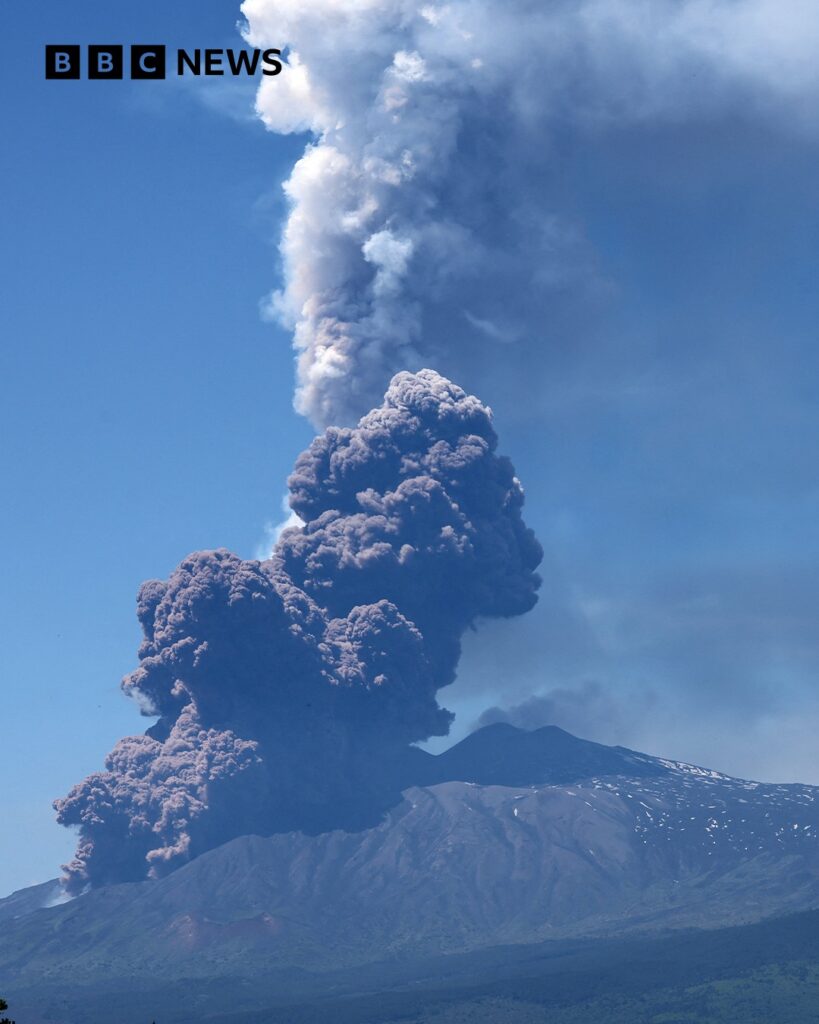
As ash spewed into the atmosphere, concerns immediately turned to air travel. The nearby Catania–Fontanarossa Airport, a major hub for the region, was temporarily closed, with all arrivals and departures suspended due to poor visibility and the potential threat of ash ingestion in aircraft engines. Flights were either delayed, diverted, or canceled altogether, leaving many travelers stranded or rerouted.
Officials from Italy’s National Institute of Geophysics and Volcanology (INGV) issued warnings and advised residents in nearby towns to stay indoors, close windows, and avoid unnecessary travel. Ashfall was reported in Catania, Nicolosi, and other small villages nestled on Etna’s slopes. Cleanup operations began almost immediately, as roads and cars were coated in a thin, gritty layer of black dust.
No Immediate Danger to Lives
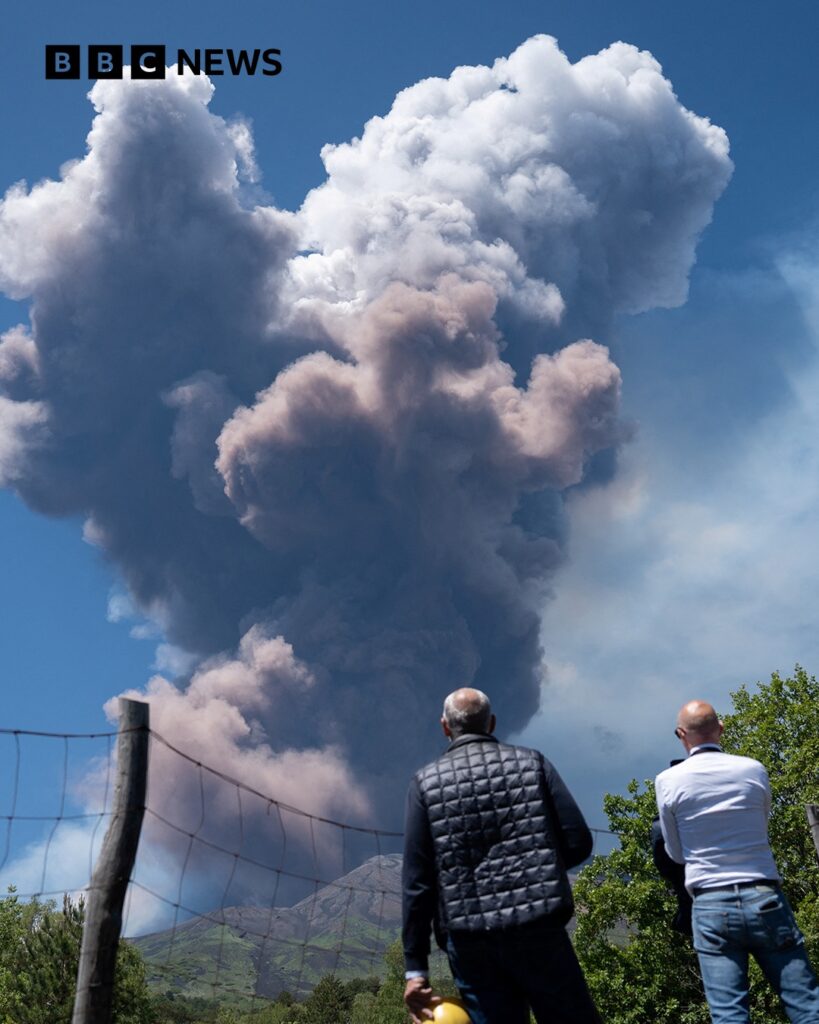
Despite the dramatic visuals and temporary disruptions, no injuries or fatalities were reported. Thanks to Italy’s advanced volcanic monitoring systems and the preparedness of local authorities, emergency protocols were swiftly put into place. Evacuation was not deemed necessary for most communities, though certain hiking trails and the upper slopes of the volcano were closed to the public as a precaution.
Local schools remained open, though outdoor activities were suspended due to air quality concerns. The Italian Civil Protection Department remains on high alert, continuing to assess the situation and prepare for any changes in volcanic behavior in the coming days.
A History of Fire and Fury
Mount Etna’s history is as rich and volatile as the lava that flows from its core. Eruptions have been recorded as far back as 1500 BCE, with notable outbursts in 1669, 1928, and several times throughout the 21st century. Its eruptions vary in style—some are slow, oozing lava flows that descend the mountain over hours or days, while others are explosive, throwing rock and ash miles into the air.
Etna is both a destructive force and a source of fascination. The surrounding region, despite the risks, thrives in its volcanic soil, which is ideal for vineyards, olive groves, and agriculture. The volcano is also a UNESCO World Heritage Site and draws thousands of tourists each year, eager to witness its breathtaking power and natural beauty.
Scientists Watch Closely
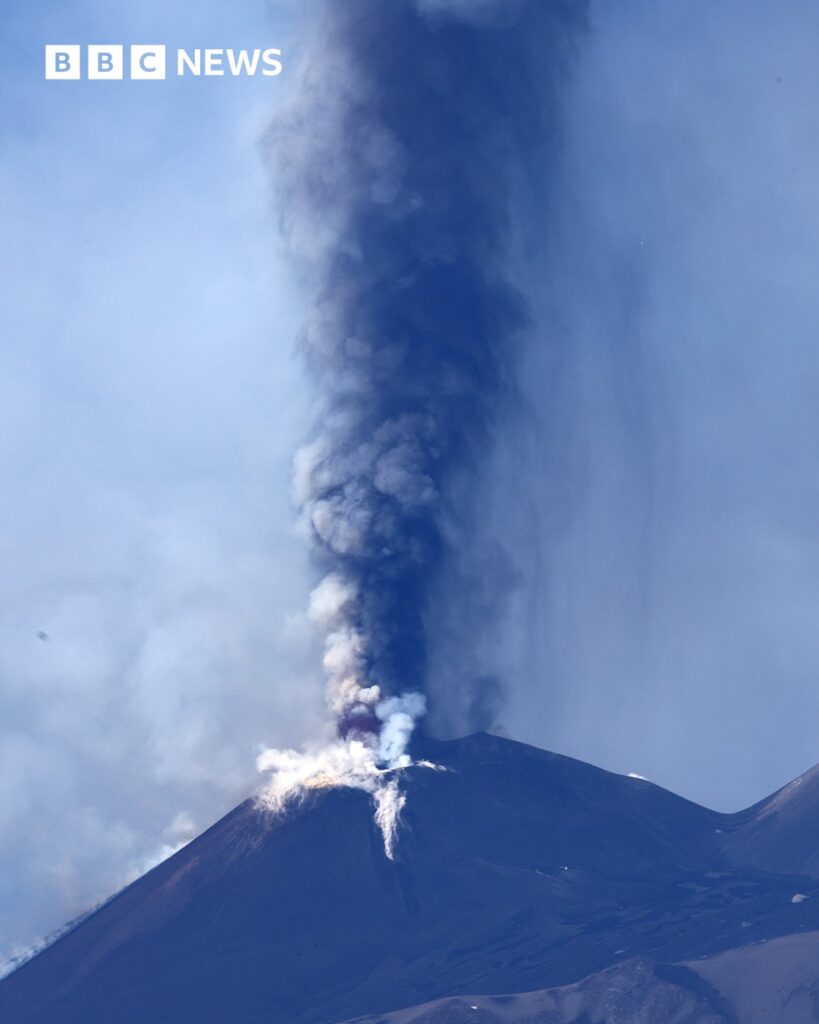
While the latest eruption appears to be part of Mount Etna’s regular activity, scientists continue to monitor it with precision instruments. Satellite imagery, thermal cameras, seismic stations, and gas analyzers provide real-time data to help predict future eruptions and safeguard nearby populations.
Dr. Luca Caruso, a volcanologist with the INGV, stated, “What we saw on Monday is a classic example of Etna’s behavior. It can erupt with little warning, but thanks to our monitoring systems, we can usually anticipate significant changes. As of now, there are no signs of escalation, but we remain vigilant.”
A Reminder of Nature’s Power
For many, Monday’s eruption served as a powerful reminder of nature’s unpredictability and raw strength. While Etna has erupted countless times, each event is unique and carries its own challenges and awe-inspiring moments. The dramatic images of lava lighting up the sky and ash clouds stretching into the horizon are a testament to the Earth’s dynamic inner workings.
Social media was flooded with photos and videos from both residents and tourists, many of whom stood in awe at the sight of fiery fountains shooting into the sky. Hashtags like #MountEtna, #EtnaEruption, and #VolcanoWatch trended globally as people marveled at the display.
What Comes Next?
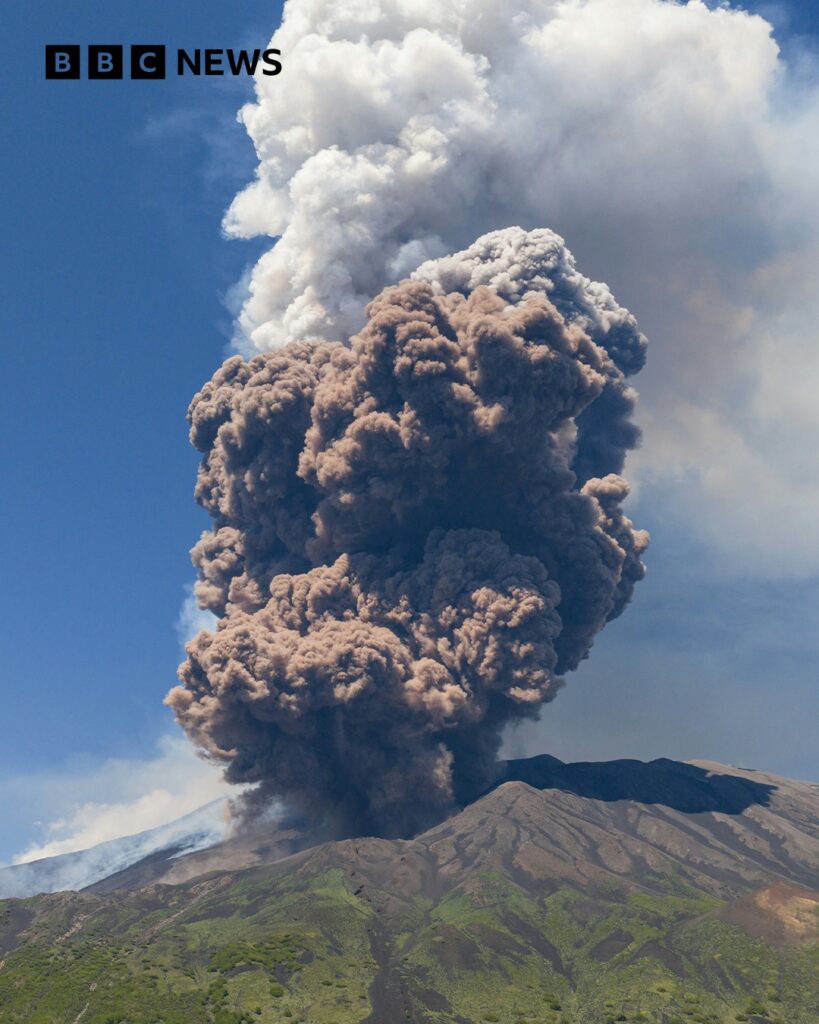
Authorities and experts will continue to monitor Mount Etna over the coming days and weeks. While eruptions of this magnitude are part of its natural cycle, the possibility of follow-up activity remains. Travelers are advised to stay updated on flight information and follow all safety instructions issued by local officials.
For now, life continues on the slopes of Etna, where people have learned to live in harmony with the fire-breathing mountain they call home.
